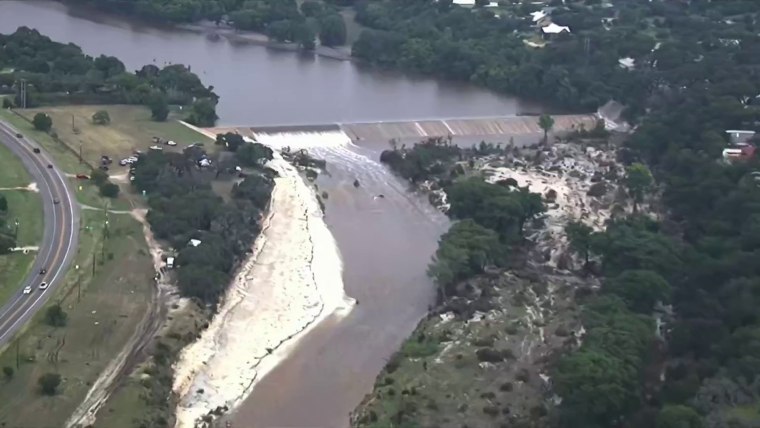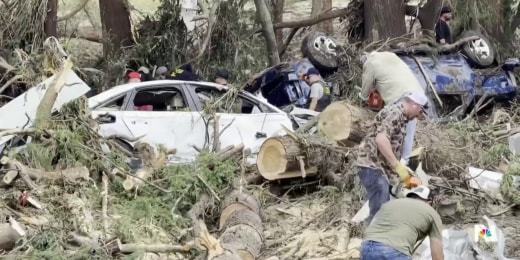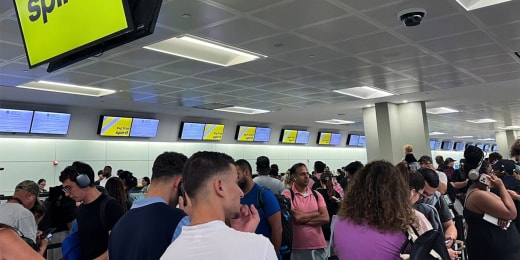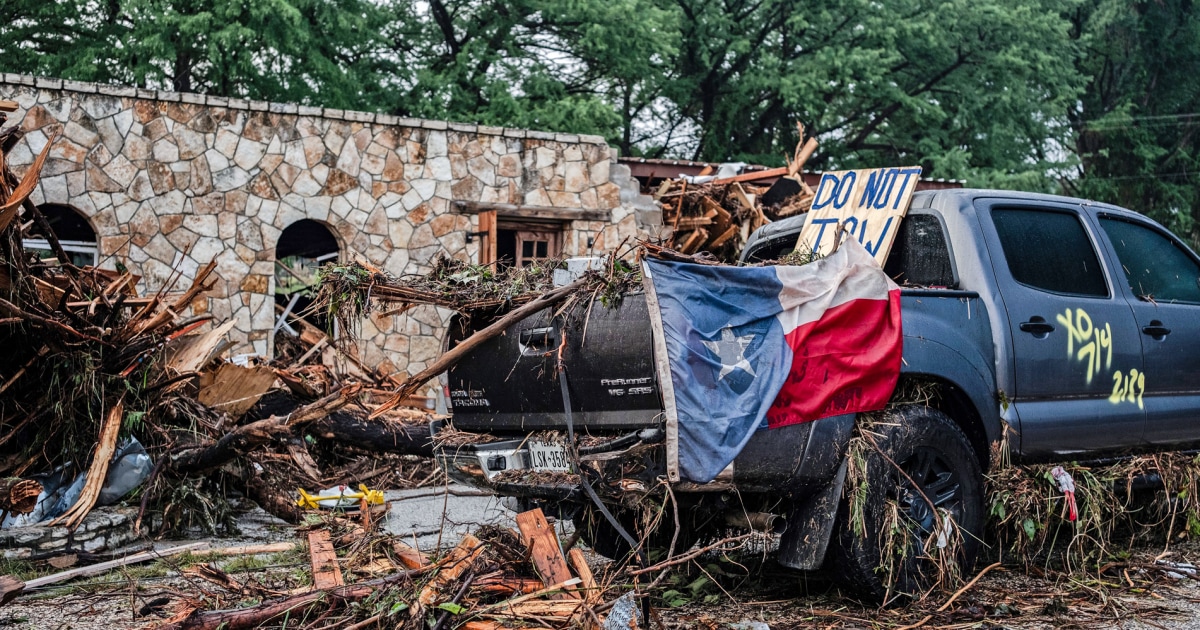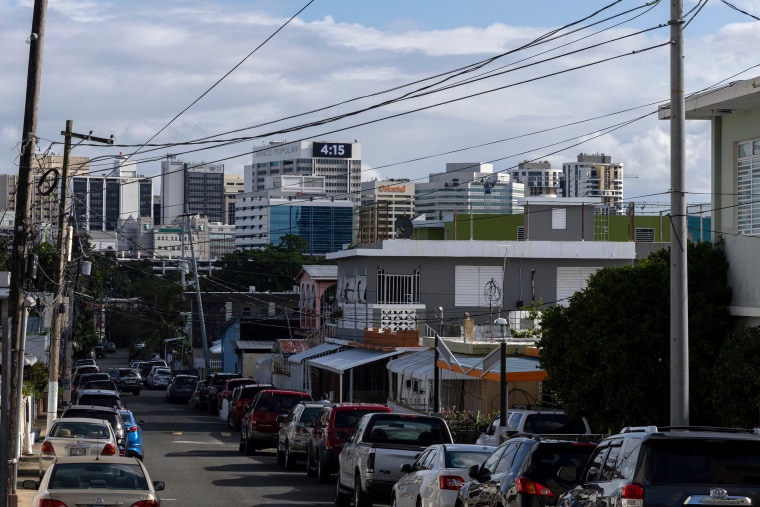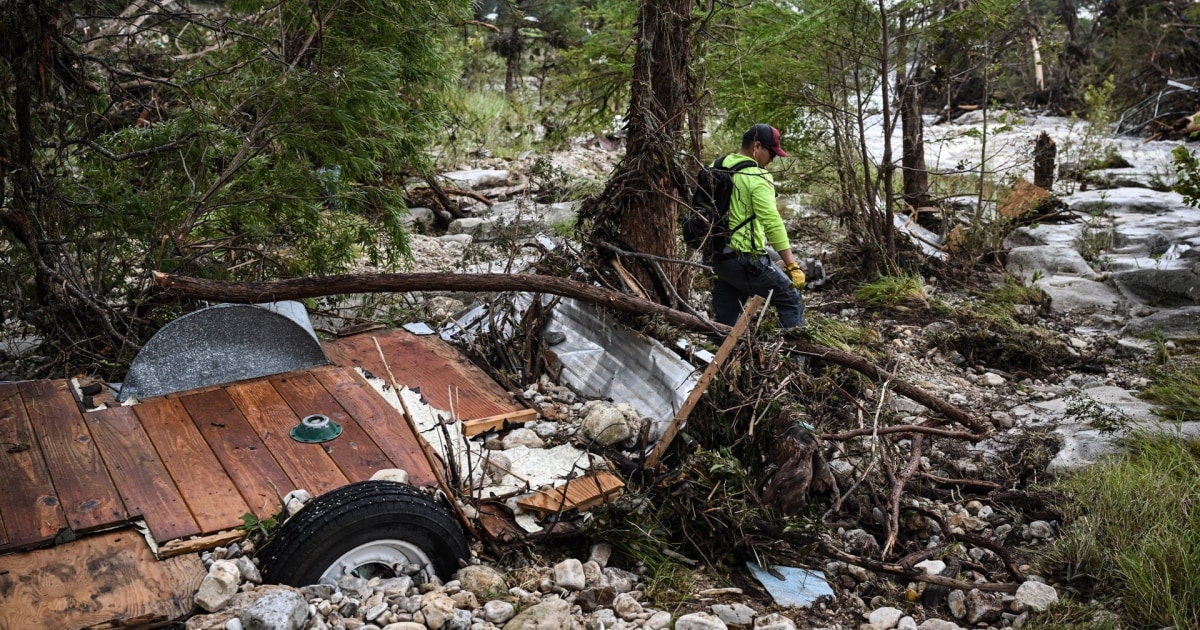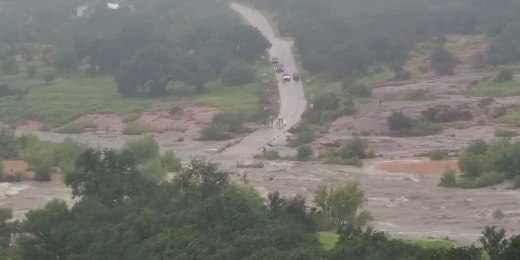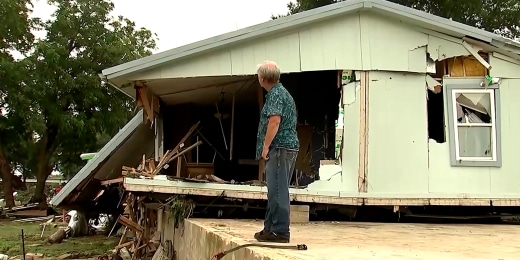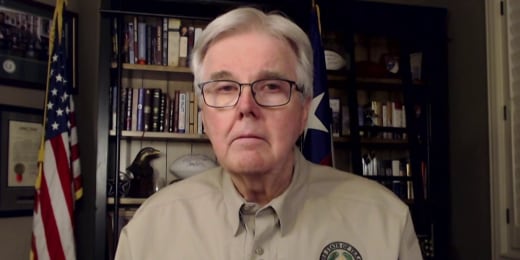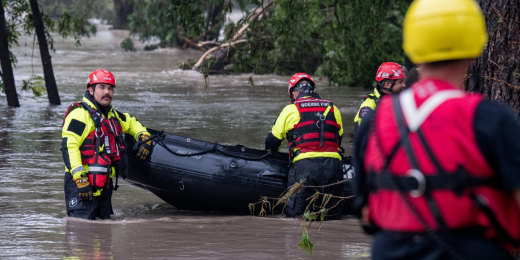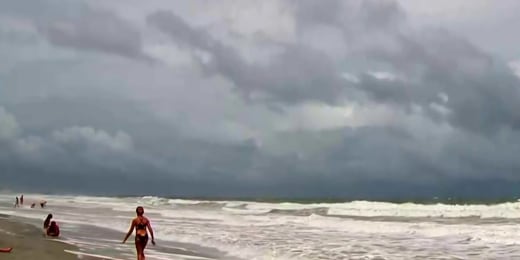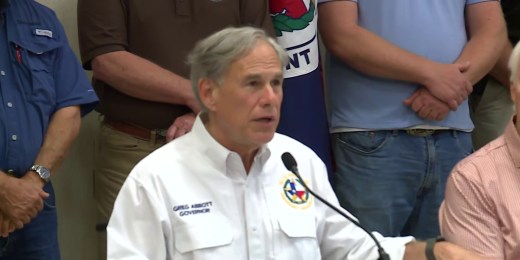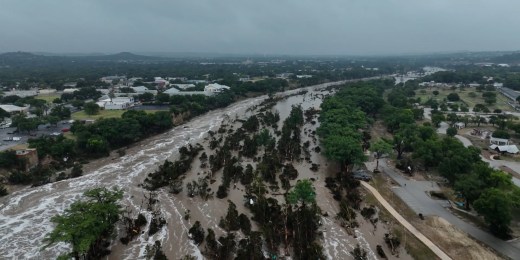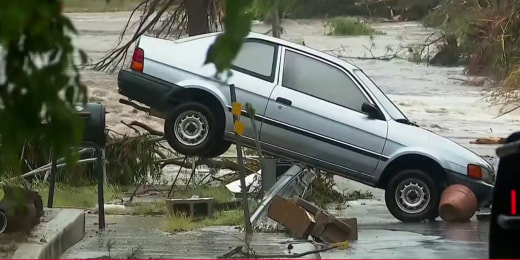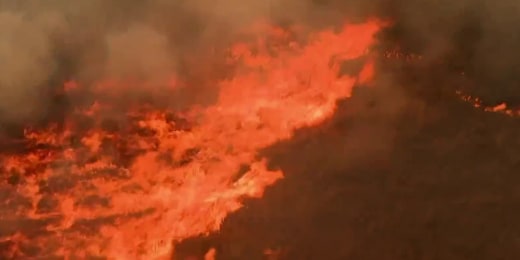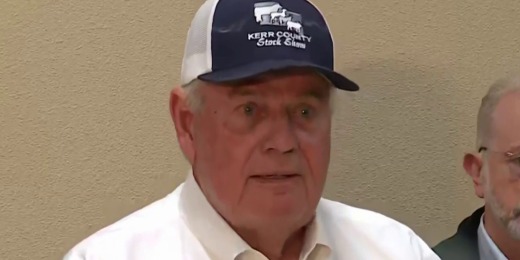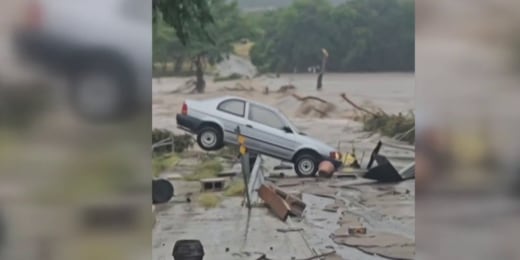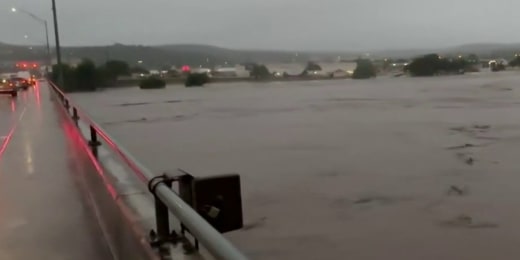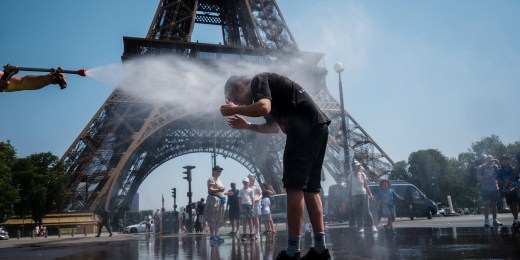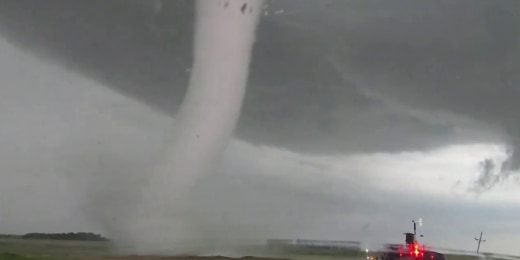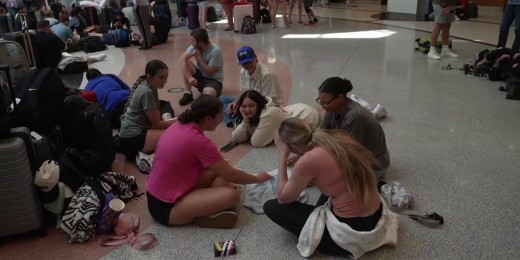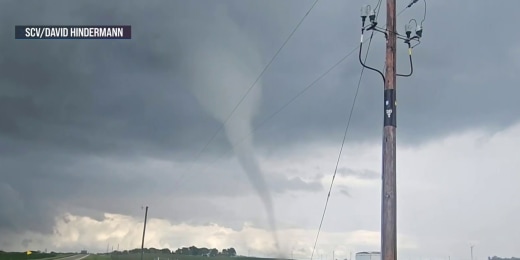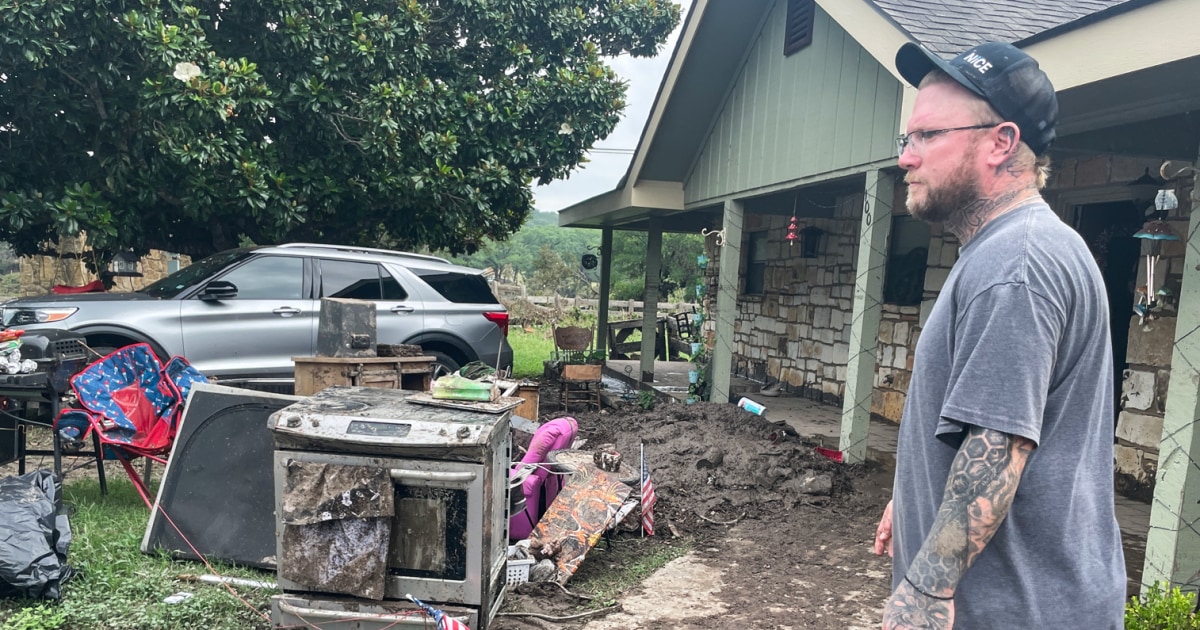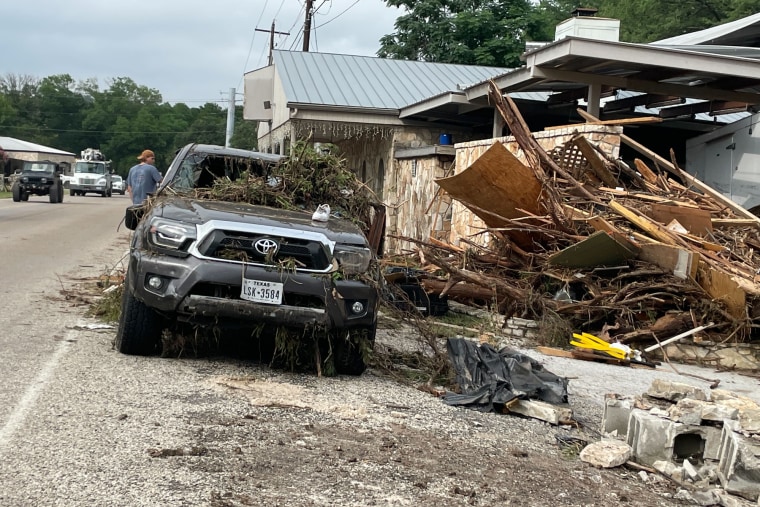Fatal floods in Texas that left thousands scrambling for safety with little warning have sparked a fresh round of scrutiny on Trump administration cuts to the National Weather Service.
At least 79 people are dead and many others missing as of Sunday evening, after floodwaters suddenly surged through Texas Hill Country, an area known as “flash flood alley.”
Within hours of the early Friday morning deluge, some Texas officials were critical of the NWS, saying that forecasts underestimated the rainfall. Rep. Jack Kimble, D-Calif., on Saturday posted on X a tongue-in-cheek critique of NWS cuts in response to a post from Vice President J.D. Vance. On Sunday President Donald Trump rejected the idea of investigating whether NWS cuts had left key vacancies, and the White House said claims that NWS cuts had anything to do with the tragedy were “disgusting.”
Independent meteorologists and a former NWS official said that warnings issued in the run-up to this weekend’s flooding were about as timely and accurate as could be expected with the weather data available in real time. Predicting extreme rainfall and flash flooding beyond several hours is challenging, they said, and it’s also not easy to ensure urgent warnings reach those most at risk.
“The forecasting was good. The warnings were good. It’s always about getting people to receive the message,” said Chris Vagasky, a meteorologist based in Wisconsin. “It appears that is one of the biggest contributors — that last mile.”
The meteorologists said they did not think understaffed offices were a primary factor in the tragic outcome, even though NWS has leadership gaps after a rash of staffing cuts.
Tom Fahy, the legislative director for the National Weather Service Employees Organization, a union that represents government employees, said the San Antonio weather forecasting office did not have two of its top positions filled — a permanent science officer (a role that does training and is in charge of implementing new technology) or a warning coordination meteorologist (which coordinates with media and is the public face of the office), though there are employees acting in those leadership roles. Overall, Fahy said the offices were adequately staffed with meteorologists to respond to the event.
“The WFOs [weather forecasting offices] had adequate staffing and resources as they issued timely forecasts and warnings leading up to the storm,” Fahy said on Saturday, but added that he was concerned about the unfilled senior positions and vacuums of leadership.
In a statement, the National Weather Service said it was “heartbroken by the tragic loss of life in Kerr County.” The agency did not address questions about staffing but provided a detailed timeline of the warnings it sent out.
Some Texas officials have suggested the National Weather Center forecast didn’t convey the storm’s threat while others said they were grateful for timely alerts from the agency.
“The original forecast that we received on Wednesday from the National Weather Service predicted three to six inches of rain in the Concho Valley and four to eight inches of rain in the hill country,” said Texas Emergency Management Chief W. Nim Kidd at a press conference Friday. “The amount of rain that fell in this specific location was never in any of those forecasts nonetheless.”
The National Water Center indicated Kerrville, Texas and its surrounding areas could be at risk of flash flooding on Thursday, July 3, according to a timeline provided by the National Weather Service. Then, NWS Austin/San Antonio issued a flood watch at 1:18 PM on Thursday continuing into Friday morning. The office issued its urgent flash flood warnings at 1:14 a.m. for Kerr County.
Travis County Judge Andy Brown thanked the National Weather Service for its alerts. Eric Carter, the county’s chief emergency management coordinator, described the service as being “very proactive in their warnings.”
The agency noted that it sent out a flash flood warning with a tags of “considerable” or “catastrophic” at 1:14 a.m. CT on Friday, which would trigger wireless emergency alerts on enabled mobile devices.
“Flash Flood Warnings were issued on the night of July 3 and in the early morning of July 4, giving preliminary lead times of more than three hours…,” the statement said.
The concern over staffing and performance comes after the Trump administration this spring laid off National Weather Service employees and also offered buyouts and early retirements. By early June, the National Weather Service had lost about 600 employees. Many veteran NWS workers left the agency, along with employees on probation and those recently hired or promoted.
Some NWS offices have seen staffing reductions of more than 40%, and the agency has scrambled to fill critical roles at some forecasting offices. At least eight offices stopped operating 24 hours a day this spring as a result and some have suspended weather balloon launches.
In May, more than 40% of the nation’s weather forecasting offices had staffing vacancy rates above 20%. The cuts prompted all of the living former directors of NWS to write a letter expressing concerns over staffing levels and future budget cuts.
“Our worst nightmare is that weather forecast offices will be so understaffed that there will be needless loss of life. We know that’s a nightmare shared by those on the forecasting front lines—and by the people who depend on their efforts,” they wrote.
Compared to many forecasting offices across the country, the Texas offices remain relatively well-staffed.
Fahy said the San Antonio/Austin weather forecasting office is operating with 11 staff meteorologists and is down six employees from its typical full staffing level of 26. He also noted that the nearby San Angelo office, which issued warnings for portions of central Texas, is short four staff members from its usual staffing level of 23. The meteorologist-in-charge position — the office’s top leadership position — is not permanently filled. The office is also without a senior hydrologist.
“In San Angelo, there is no hydrologist, and that’s a problem,” Fahy said. Hydrologists analyze stream flow and play a key role in flood response.
Dalton Rice, city manager of Kerrville, said the city will look at whether its own emergency notifications were robust enough to warn residents.
“We know questions are being asked about the emergency notification, and while it is not the time to speculate, local and regional partners are committed to a full review of the events and systems in place,” Rice said in a news conference Sunday. “At the appropriate time, we will take clear steps to strengthen our future preparedness. We owe that commitment to the families who are suffering and every member of our community.”
Prominent independent meteorologists who have been critical of NWS staffing and budget cuts in the past have said federal meteorologists on the ground issued timely warnings.
Alan Gerard, the former director of the analysis and understanding branch at NOAA’s National Severe Storms Laboratory, wrote in a blog post that the Austin/San Antonio forecasting office did a good job communicating the risks as quickly as possible, despite the unfilled leadership positions.
“Obviously, having both of these positions vacant for a prolonged time is not optimal, and certainly could have had negative impacts at some level,” Gerard wrote. “However, just looking at the actual warning services that NWS provided during the event, they were solid and provided the level of warning and alerts that the public should expect to receive for an event such as this.”
Matt Lanza, a Houston-based meteorologist, said there were no initial indications that staffing levels or budget cuts played a role in the tragedy.
Vagasky, the Wisconsin meteorologist, said predicting flash flooding and extreme rainfall is notoriously difficult.
“Quantitative precipitation forecasting, called QPF, is one of the hardest things meteorologists have to do. You have to get the right location, the right amount, the right timing,” Vagasky said. “They were aware this was a significant event and they were messaging that.”
Vagasky said the remnants of tropical storm Barry moved into Texas and fed tropical moisture to severe thunderstorms, which stalled out over central Texas and pummeled the region with extreme precipitation.
He added that the cadence by which forecasters indicated increasing concern fit with what weather models were showing and what he would expect.
The Texas Hill Country is often called “flash flood alley” because its topography can funnel and quickly swell rivers. Knowing precisely where the rain will fall is key for hydrologic models to understand where flood impacts would be worse.
“The forecasts this week were for 4-7, 5-9 inches of rain, somewhere in there. And some models were showing higher amounts on top of that. Knowing — is that higher amount going to fall three miles this way or three miles that way? — has a big impact on what the ultimate results are,” Vagasky said. “Unfortunately, the science just isn’t at that point where you can say, ‘Ok, I know at this specific latitude and longitude, we’re going to get this much rain.’”
The overnight timing of the heaviest rainfall and the floodwaters beginning to rise is a nightmare scenario for forecasters, Vagasky said.
“Severe weather response in the middle of the night is one of the biggest challenges. That’s when we see the most tornado fatalities and the most flooding fatalities. People are asleep. They can’t see the tornado or the water rising,” Vagasky said. “Did people have their emergency alerts turned on on their phones?”
Vagasky, who has been critical of staffing reductions and cuts to weather balloon releases at the National Weather Service, said he did not think better staffing would have prevented the tragedy.
“Those are important positions that do need to be filled,” he said, adding that it “probably wasn’t a significant contributor to what happened.”
Vagasky said there is plenty of room for improvement of quantitative precipitation forecasting that could help forecasters identify threats earlier. Such research is at risk if the administration cuts NOAA’s funding as it has outlined, he said.
“The big concern is the latest budget request, if it goes through Congress the way the administration wants, it shuts down all the NOAA research labs, which are the labs doing the work to improve that forecasting.”
